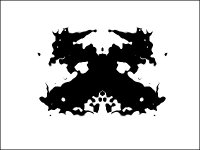
"Learn the fundamentals of the game and stick to them." --Jack Nicklaus
I hate to come back to the whole “three act” thing, but I find over and over again that people are not adhering to it. My belief is that the lack of strong first acts in films in recent years has much to do with the steady decline in movie attendance. No first act, no emotional involvement.
I think that I mentioned before that I have been studying magic. There are many benefits for storytellers who study magic, one of which is the importance of the first act. Even the simplest magic trick uses three-act structure. Christopher Milbourne in his book Magic Book put it this way:
“The magician can assume nothing. Unless an audience has been led to believe that a closed hand holds a coin, they will not be amazed when it is shown to be empty.”
He’s talking about having a clear first act.
This idea of being clear often frightens my students. They don’t want to point out the obvious. But what is obvious to them may not be so obvious to the audience. Milbourne’s book continues:
“If they are not aware that an object is green, they will not be astonished when the color changes to red. My friend [magician] Paul Ebling illustrated this point during a demonstration of gambling techniques. He passed around a pair of unprepared dice with white spots for examination. Then he announced he would shake the dice and roll a seven. The seven came up as promised. This was a far more remarkable feat than the spectators realized. Until Paul reminded them that the dice that the examined dice had been green, no one had noticed that the dice on the table were red.”
People only notice what you tell them to notice. If you want to involve them be obvious about what you want them to notice. Magicians understand this but over the years I have seen a decline in the understanding and importance of a strong act-one in storytelling. The tendency is to want to get to the meat of a story because that’s where all the fun happens.
I often use jokes as examples because they are little stories. Everyone knows the importance a strong first act when they are telling a joke. And the listener knows that everything that they are being told will help them understand the punchline of the joke. A listener would never say, “Just skip all of that crap and get to the ending”. And joke-tellers know so well that act one is important that when they are in the middle of a joke and have forgotten something they will be sure to go back and fill in the missing information: “Oh, wait, I forgot to say that the guy has a duck in his pants.”
But first acts are all but disappearing from films. There is almost no time spent setting up the characters and the world they inhabit before the inciting incident. They deprive the audience of any emotional involvement. Imagine a magician’s opening move being that he takes a card randomly out of a deck and asks triumphantly, “Is this your card?” Not much of a trick. With no set-up there is no trick. No emotional involvement. Same with stories.
Don’t be afraid to take the time it takes to give your audience all they need to know to become gripped by your story.

